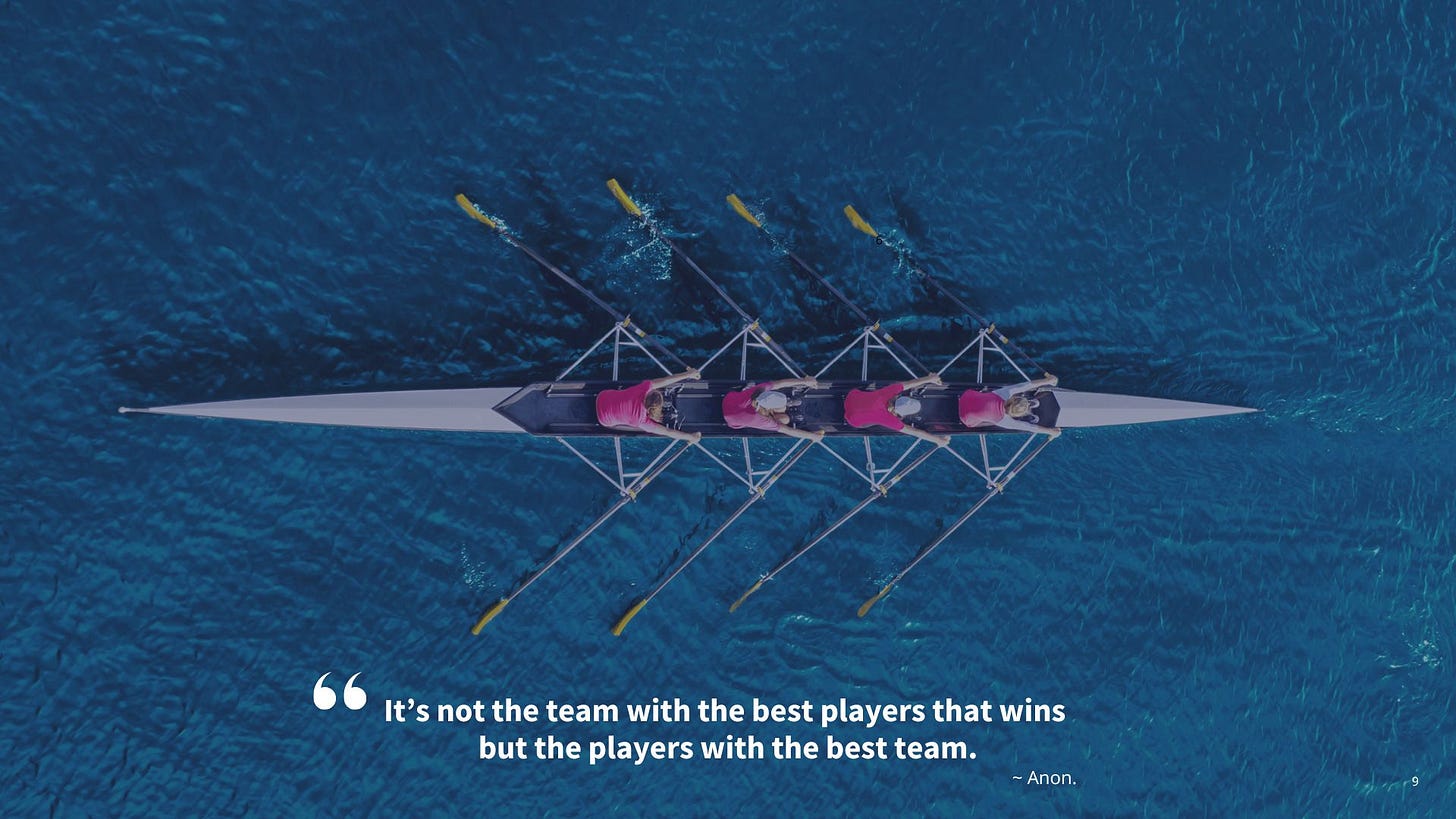What are the drivers of team performance?
You don’t create high-performing teams—you create the conditions for them to emerge
Many organisations fall into a common trap: hiring "superstar" talent from competitors, only to watch these high performers struggle in the new environment.
Despite assembling seemingly brilliant individuals, leadership teams are often left wondering why performance lags behind expectations. This disconnect highlights a fundamental misunderstanding of what truly drives exceptional team results.
The gap between average and exceptional organisational performance rarely comes down to individual brilliance alone. Rather, it's found in the invisible social architecture that enables diverse individuals to function as a cohesive unit.
The Superstar Fallacy
The notion that assembling the brightest stars automatically creates excellence is seductive but rarely translates to reality. As the sporting world repeatedly demonstrates, all-star teams routinely lose to well-coordinated opponents with supposedly "lesser" talent.
David Burkus captures this perfectly in his research: "Talent isn't portable." When stars move to new environments, their performance typically declines – not because they've lost ability, but because performance emerges from context and relationships, not just individual capability.
Brilliant individuals often struggle in new roles despite impressive credentials. The challenge isn't their skills but their inability to build trust with colleagues who may view them as outsiders to the established team dynamic.
Trust: Where Everything Begins
Transformative moments in team development often centre around vulnerability and support rather than brilliance. When a team member can acknowledge mistakes without fear of repercussion, and colleagues respond with support rather than blame, the entire atmosphere shifts.
This exemplifies what Patrick Lencioni calls "vulnerability-based trust" – the confidence to be genuinely open with colleagues without fear of judgment. This isn't about trust built on likeability, but something deeper: the certainty that teammates prioritise collective success over personal ego.
Without this foundation, teams develop what appears to be harmony, yet masks profound dysfunction. Disagreements go underground, decisions lack genuine commitment, and departmental silos persist despite structural reorganisations.
The Leadership Paradox
A curious pattern emerges when studying leadership across organisations: those leading the highest-performing units typically rate themselves more modestly than their counterparts in struggling divisions. Research from The Leadership Circle shows leaders in underperforming teams consistently overestimate their effectiveness – particularly in self-awareness!
The most effective leaders embrace a seeming paradox: they create conditions for teams to thrive rather than personally driving outcomes. They distribute leadership appropriately, ensure clarity of purpose, establish productive norms, and connect teams with the impact of their work.
Strong team performance often emerges when leaders step back from solving everyone's problems. When they stop providing answers and start asking better questions, team members step up in ways that can transform organisational capability.
Finding Meaning in Monday Morning
Financial targets rarely inspire genuine engagement. When team members question why they should care about quarterly goals, speeches about shareholder value typically fall flat. However, when teams connect with the human impact of their work – seeing how their products or services benefit real people – energy and commitment visibly transform.
Research confirms this effect. David Burkus's work shows that "pro-social purpose" – understanding how work benefits others – dramatically increases performance. Teams energised by meaningful impact consistently outperform those motivated solely by financial metrics.
Cultivating the Ecosystem
Organisations that sustain excellence understand that team performance depends on nurturing an interconnected ecosystem:
Trust and psychological safety that encourage honesty and appropriate risk-taking
Leadership that creates supportive environments while distributing authority
Team cultures where knowledge sharing and continuous learning thrive
Communication structures that promote clarity and constructive challenge
Balanced roles providing both certainty and flexibility
Organisational support through timely resources and meaningful recognition
When these elements align, teams develop remarkable resilience and creativity. Previously average teams can transform when leaders systematically address these factors.
The Path Forward
There's something refreshingly honest about acknowledging that building high-performing teams requires sustained effort rather than quick fixes.
The journey starts with leaders brave enough to seek genuine feedback on how their own behaviour enables or limits team excellence.
The most challenging aspect of organisational transformation isn't changing systems or processes – it's changing leadership behaviours and team dynamics.
How leaders show up every day shapes the environment in which teams either thrive or struggle.
Extraordinary team performance isn't accidental or magical. It emerges through deliberately cultivating environments where trust, purpose, and support combine to unleash our collective potential.






Spot on Paul. The ability for a new person to come into an established culture is art! And, does require ongoing support and deliberate integration by leadership with the team. All those skills we learn on the aikido mat (blending, connection, centering) are so valuable when transferred to organizations. Thank you for your article.